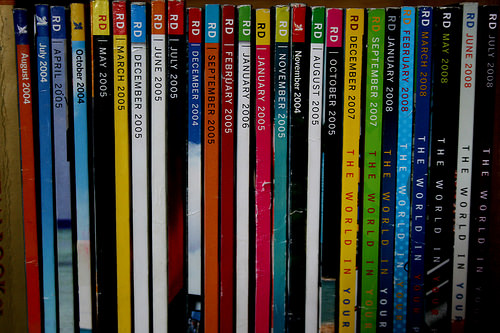Bankruptcy and Branding: A New Brand for Reader’s Digest?
Brand revamp could be key to strengthening classic magazine after second bankruptcy since 2009
By Lauren Nisbet, staff writer
Filing for bankruptcy for the second time in a four year period, RDA Holding Co. may need more than financial restructuring to return the iconic Reader’s Digest brand to its former glory.
“Reader’s Digest clearly has an uphill battle from a branding perspective,” says branding expert Marc Sampogna, Founder of Canopy Brand Group in New York. “It’s not just about what the brand looks like, it’s about what it stands for. In this day and age, subscribers are interested in relevant content at real-time speed.”
[pullquote]Publishers who want to thrive need to create a strategy that works in the 21st century[/pullquote]
According to Mik Stroyberg, Director of Consumer Engagement at digital publishing platform ISSUU, acknowledging a growing amount of content, increased speed, and other technological advances is the key to succeeding in the industry. “If publishers don’t recognize this new reality and adjust their business strategy accordingly, they won’t make it,” he says. “Today, people search for content online, choosing from an incredible array of options, and most online content is free. Publishers who want to thrive need to create a strategy that works in the 21st century.”
Stroyberg stresses the importance of adaptability and applying these elements in a more modern context. “Publishers are competing in a new environment, one that features millions of content sources,” he says. “Established brands have a huge advantage in this scenario, because since the reader has heard of the brand, they may regard it as a more trusted source and is more likely to select the content over that of a random blogger. Savvy brands leverage this advantage by making content easily accessible.”
As for Sampogna, he points to The Huffington Post and Mashable as comparable publications that have embraced online opportunities, created distinct identities and have became known for their coverage of news and topics across a wide range of industries.
“Reader’s Digest sounds dated, and I believe it will be hard to crack that stigma even with new branding,” he says. “It will take a revolutionary change, not an evolutionary one. But before any of that can happen, they need to understand what they want the brand to stand for in the hearts and minds of their subscribers.”

Courtesy of phalinn
By Sampogna’s definition, a revolutionary change occurs when a brand recognizes an opportunity to redefine their category and reinvent what it stands for. For RD, he recommends starting with a clean slate and completely reimagining the current brand while still acknowledging the publication’s history.
“There are always methods to maintaining the essence of what a brand has built or established in equity over the years,” he says. “Digging deep into the brand’s history could uncover untapped insights that could be used for new positioning.”
Interestingly, the Canadian Reader’s Digest publication has not experienced the same financial troubles as it’s American parent. As one of more than 40 international editions that are run independently of it’s US counterpart, the Canadian company’s success could be attributed to its focus on developing original content rather than relying on copy provided by other publications.
In a recent interview with the Globe and Mail, Philippe Cloutier, General Manager of Reader’s Digest Association (Canada) acknowledges the impact of RDA’s bankruptcy, but remains optimistic regarding the power of the existing brand. “We’re taking the approach of putting the product first and we hope people remember the quality of content we have to offer. It’s a difficult industry, but we will weather this storm just as we have weathered others over the last 65 years.”
Lauren Nisbet is a graduate of Western University’s Media, Information and Technoculture program.































Share the post "Bankruptcy and Branding: A New Brand for Reader’s Digest?"